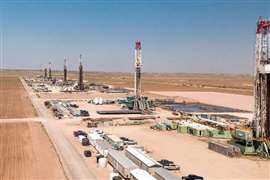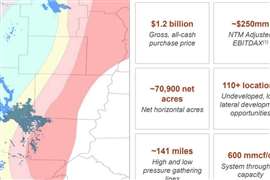European gas inventories below five-year average
April 22, 2021

Working natural gas inventories in Europe at the end of March, the traditional end of the winter heating season, totaled 1087 billion cubic feet (Bcf), about 31% of capacity and 11% lower than the previous five-year average, according to a recent report from the U.S. Energy Information Administration.
The report, citing data from Gas Infrastructure Europe’s Aggregated Gas Storage Inventory, noted that the European inventories were the third lowest reported in 11 years of publicly available gas data. The lowest reported end-of-season working gas stock for March was 620 Bcf in 2018.
Europe entered the heating season in November 2020 with 3423 Bcf, about 95% of total storage capacity, the second highest end of season in Europe in more than 10 years. Although flush with inventory in November, the region’s gas supplies started to fall quickly in January and February because of extended cold weather, particularly in Northwest Europe, the EIA reported.
In February, that weather prompted record withdrawals prompted 713 Bcf in withdrawals, one of the largest draws in recent years. The northern and southern portions of the European pipeline grid is not fully integrated, forcing some European countries to rely on domestic natural gas storage and LNG imports to meet peak demand in winter months, the EIA reported.
As cold weather led to more demand for gas for heating, domestic gas storage in several countries quickly declined and imports of liquefied natural gas (LNG) rose to meet the ongoing demand. Europe’s LNG imports have risen from 5.0 Bcf/d in January to 7.0 Bcf/d in February, 9.2 Bcf/d in March and 11.1 Bcf/d in April, according to European data cited by the EIA.
U.S. LNG exports have been a major supplier to European demand. A report commissioned by the EIA earlier this year showed the U.S. is the world’s largest supplier of spot LNG cargoes. Throughout 2020 and January 2021, more than half of U.S. LNG exports went to Asia because of a prolonged period of cold weather and unexpected outages at LNG export facilities. In February, about 55% of U.S. LNG exports, or 4.2 Bcf/d, went to Europe, the EIA reported.
CONNECT WITH THE TEAM








